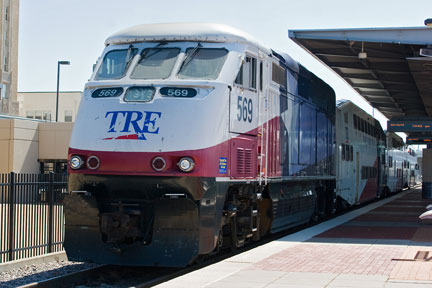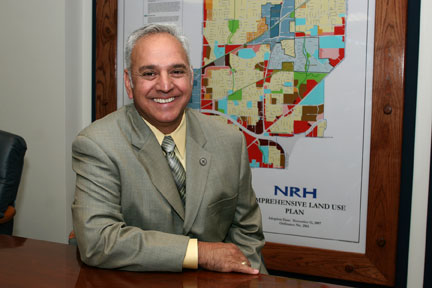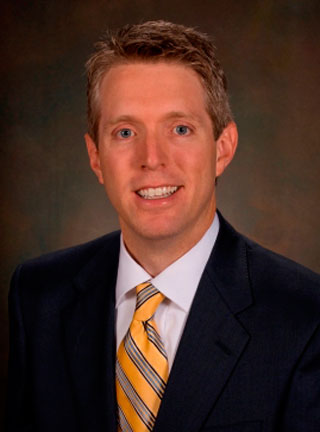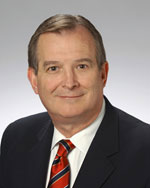Get in your car almost anywhere in the Metroplex, on almost any day, and you’re likely to end up in a traffic jam.
Sundays on I-35W? Stacked up. Driving east on I-30 near the new Cowboys Stadium? The recently opened extra lanes are already full. Dallas? Don’t go there. It doesn’t matter if you’re trying to shop in Cityview, make your flight at the airport, or just get to weekday lunch on University Drive, the roads these days are a mess. The problem’s not confined to North Texas, of course: A drive to Austin that used to take three and a half hours now is more likely to take five.
 The problem has been evident to community leaders for a long time, but in recent months it seems to have finally hit home with drivers as well. A recent survey of Metroplex residents cited traffic congestion as the most serious issue facing the region. Transportation planners and local politicians cite the ills it causes: air pollution, economic pain because of the slowdown in delivering good and services, personal lost time, and overall, a lower quality of life.
The problem has been evident to community leaders for a long time, but in recent months it seems to have finally hit home with drivers as well. A recent survey of Metroplex residents cited traffic congestion as the most serious issue facing the region. Transportation planners and local politicians cite the ills it causes: air pollution, economic pain because of the slowdown in delivering good and services, personal lost time, and overall, a lower quality of life.
Since Texas cities mostly came of age in the era of automobiles, the solution for traffic congestion in North Texas up until now has always been to build new roads and widen old ones. But with continued population growth in the region, those new lanes seem to become parking lots almost as soon as they open, and drivers are catching on.
Some statewide leaders, including Gov. Rick Perry, thought that contracting with foreign companies to build and run huge and hugely expensive toll roads was the answer. Public outrage over costs, eminent domain issues, and other problems dealt that plan a crippling blow (though not fatal – the Trans-Texas Corridor may have been renamed, but most of its pieces are still alive).
What is gaining traction in North Texas as a major part of the solution is a modern version of an old system. Passenger rail projects, in several different forms, could change the transportation picture here substantially in the next few years. Local, regional, statewide and national plans are involved – modern streetcars for the inner city, commuter rail on freight lines to connect the region’s major cities with their sprawling suburbs, and, further in the future, high-speed trains connecting Texas cities with other states. It’s the kind of system that older cities in the Northeast, developed before the car became king, have been using for a century.
Rail service is just in its infancy here but getting stronger. Dallas Area Rapid Transit (DART) has been running its light rail system for only about a decade, but ridership is now above 70,000 a day, and it’s now the seventh-busiest light rail system in the country. The DART system has struggled through economic missteps, but it’s been widely accepted by Dallas area residents as a workable system and an engine for economic development around its stations.
Meanwhile, the Trinity Railway Express, operated jointly by DART and the Fort Worth Transportation Authority (The T), now ferries about 10,000 people each day between Fort Worth and Dallas. The Denton County Transportation Authority has started construction on a 21-mile commuter rail line to connect to DART light rail, allowing passengers to go from Denton to downtown Dallas. The T is seeking federal funds to build a commuter rail line from southwest Fort Worth to Dallas/Fort Worth International Airport. And a modern streetcar line in Fort Worth seems likely to be approved by the city council.
But all that is still just the beginning, according to the political and business leadership of North Texas. A plan to develop a 251-mile system of commuter rail lines, mostly on existing freight tracks, is being pushed locally and in Austin. As usual, the biggest issue is where to get the money. As the current legislative session draws toward its June 1 close, bills to give local voters the option to raise money for rail and other transportation projects are still alive in both the House and Senate, though in very different forms. In both bills, potential increases in the tax on gasoline are at the heart of the funding process.
Will voters will go for an increased gas tax? Local political leaders say they’re seeing a major shift in public opinion on that topic. It began when gas prices hit $4 a gallon last year but has increased as prices at the pump have gone down by half, while the economy tanked. Air quality is a major concern, since federal transportation funds will be cut if the region does not get into compliance with clean air standards. But people also just seem to have gotten tired of sitting in traffic.
“When I talk to people about using a rail system for their commute or traveling through the Dallas-Fort Worth area to go to a baseball or football game, the one point that keeps coming through is they feel they are wasting their personal time on the roadways,” said North Richland Hills Mayor Oscar Trevino, a member of the Regional Transportation Council for the North Central Texas Council of Governments, the entity that is proposing the commuter rail plan.
“If you were to go to work by train, you could work on your laptop, play video games if you want, read a newspaper or a book,” Trevino said. “If we can give people a system that is an efficient and better use of their personal time, I think they will back [it].
“The best part of this plan is what it does for the western part of the Metroplex,” he said. “We are sort of where Dallas was 20 years ago, but we are the fastest-growing part of the region. If we don’t do this today, the problems will be far more serious in the future.”
The RTC, made up of about 40 political leaders from across North Texas, has been working on the regional rail system plan for about five years. Last year the transportation council approved a map of 11 rail lines to connect cities, hook up with existing DART and planned light rail lines, and in general get commuters where they need to go around the Metroplex.
Under the plan, existing freight tracks would be bought or leased because that’s much cheaper than building new light rail lines as DART has done. RTC members believe that, while economic development tends to be greater along light rail lines, a freight-line-based system would also provide some benefits. “We are going to see a lot of mixed-use developments – housing, retail, restaurants, office space – when these lines start being used,” said Dallas County Commissioner Mike Cantrell.
The commuter rail plan isn’t set in stone, since it’s based on population and employment forecasts extending out 20 years. But if the plan is built out, Fort Worth residents would be able to take the train to Cowboys or Rangers games (as they now take the TRE to Dallas Stars and Mavericks games). The system would connect downtown Fort Worth with Arlington, Cleburne, and Midlothian and would provide a second connection (along with the TRE) to Dallas.
The trains would be milk-runs, not expresses, for the most part, with stops at universities, towns along the way, major employment areas, and some freeway intersections. In the Dallas area, the commuter line would feed the DART light rail system, so that someone from McKinney, for example, could get to Plano, where the DART line now ends, and thence to Dallas. The Fort Worth-Cleburne line would stop in the Medical District, at Texas Christian University, at Loop 820, and in Burleson and Joshua. Another line would run north from Carrollton to Frisco and south to Irving to connect with DART rail.
“DART has been growing their light rail system, but for most people in the Metroplex right now, the only real option they have to get around is their car,” said Chad Edwards, NCTCOG’s program manager for transit system planning. “I think people are beginning to realize we need more transportation options, and rail is a part of that.”
In January, NCTCOG commissioned a survey of 1,600 residents of Collin, Dallas, Denton, Ellis, Johnson, and Tarrant counties about transportation issues. The survey found that 75 percent drive a car alone to work, and 37 percent spend more than an hour a day in traffic. Only one percent said they used passenger or light rail – but a lot more apparently would like to.
 About 45 percent of respondents said the lack of a regional commuter rail system in DFW is a “serious” or “very serious” issue. And because of issues of air quality and traffic congestion, a whopping 80 percent said they probably would support a passenger rail proposal. Half said they would be willing to spend $50 to $75 annually to fund the project, and another 35 percent said they’d be willing to spend something, though less than $50. More than half (53 percent) also said they would be willing to pay a three- to five-cent per-gallon gasoline tax increase to fund the commuter rail plan.
About 45 percent of respondents said the lack of a regional commuter rail system in DFW is a “serious” or “very serious” issue. And because of issues of air quality and traffic congestion, a whopping 80 percent said they probably would support a passenger rail proposal. Half said they would be willing to spend $50 to $75 annually to fund the project, and another 35 percent said they’d be willing to spend something, though less than $50. More than half (53 percent) also said they would be willing to pay a three- to five-cent per-gallon gasoline tax increase to fund the commuter rail plan.
That’s good, but if either of the proposals being considered by the legislature becomes law, the gas tax increase probably will be closer to 10 cents. The entire 251-mile system would cost about $457 million a year over the next 20 years, plus maintenance, and passenger fares won’t come close to paying that bill.
If the commuter system is built as now planned, by 2030 Fort Worth residents could board at the Intermodal Transportation Center or the T&P Building and ride the rails all the way to McKinney, and vice versa. Students from Burleson could take the train to classes at TCU or the University of Texas at Arlington or Texas Wesleyan. Fans of semi-pro and college sports could go see their teams play in Frisco and Grand Prairie as well as in Dallas and Arlington.They could drive to a park-and-ride spot on SH360 in Arlington or Loop 820 in Fort Worth, and then use public transportation to get the rest of the way to their jobs or other destinations.
Because both DART and The T are planning to extend their lines to DFW Airport, the commuter rail plan doesn’t include straight-shot lines to the airport. But the commuter system, by connecting to DART and The T, would make it possible for residents from the fringes of the region – from Cleburne or Kaufman County, for example – to get all the way to the airport on public transit.
There are some holes in the plan, mostly in Tarrant County. There is no line planned west from Fort Worth to Aledo and Weatherford. A line heading north from Fort Worth to the Texas Motor Speedway (and therefore running near Alliance Airport) is currently designated as a special-events line, to run only on race days or for other events. And there is no direct connection between Fort Worth and Denton, though determined student-commuters could get there from here by changing trains at DFW Airport.
Edwards, the NCTCOG transit manager, said the plan will change if population and employment patterns don’t follow the projections. He said population projections don’t support a line west from Fort Worth right now, “but we know that part of the Metroplex is growing, and there may be a line some day that goes into Weatherford from Fort Worth.”
For some of the proposed lines between city and suburb, rather than between major cities, ridership seems questionable. The council of government’s projections show that only about 2,000 to 2,500 riders per day would be expected, for instance, on trains from Fort Worth to Midlothian or Cleburne. The Fort Worth-Arlington-Dallas line, by comparison, is expected to carry about 10,550 riders a day.
Those estimates are fairly low by commuter rail standards. The entire 251-mile system is expected to serve about 40,000 riders daily in 2030. Add to that the DART rail customers, (70,000 per day) and the 10,000 or so who ride the TRE, and the total comes to about 120,000 daily riders for the region.
In the Los Angeles metro region, by comparison, the rail system carried about 300,000 daily riders last year, as did the Atlanta system. The figure was 570,000 in San Francisco (not including the cable cars). In older urban areas like Philadelphia, Boston, and New York, daily ridership is in the millions.
“The estimates are low because this study was done by a government agency [NCTCOG], and they are extremely cautious and not going to go out on a limb with this,” said Trevino.
“Even under these very conservative estimates, we will be taking 40,000 cars off the road every day,” he said. “That’s a lane of traffic in every rail corridor.” That’s also 40,000 cars’ less pollution. “From the issue of air quality conformity, we are going to have to think more about rail,” he said. “We are going to have to go to the public and get a change of mind-set on this. If we don’t get started on this right now, we are going to face a transportation crisis down the road. And I mean that literally.”
Changing the public’s thinking is critical for more reasons than just convincing folks to park their cars and take the train. Under the legislation now being considered, voters would have to approve the idea of higher taxes twice – in a statewide ballot and then in local elections – in order to fund the system.
Two years ago, North Texas leaders went to Austin asking for legislation to allow individual counties to increase their sales tax rates beyond the current cap of 8.25 percent, with the approval of voters. The proposal went nowhere. This time around, they asked legislators for a “cafeteria” approach, to give voters a range of local revenue sources for transportation projects: increasing vehicle registration fees, property taxes, or driver’s license fees or instituting a tax based on miles driven, a tax paid by those parking in city-owned lots, or a one-time registration fee for new residents bringing their cars from out of state. The proposal was to be limited to several large metro areas, including the Metroplex, Austin, and San Antonio.
“We learned that any sales tax increase was out of the question,” said Mansfield city councilman Mike Leyman, an RTC member. “So we came up with a lot of choices [to] spread out the funding among a bunch of different options. We didn’t want to leave any one group on the hook for funding this. We also wanted to make sure voters would decide.”
 State Sen. John Carona of Dallas introduced the cafeteria-style funding bill this year, and the Senate approved it. State Rep. Vicki Truitt of Southlake introduced a similar bill in the House, but it was pretty much dead on arrival. State Rep. Joseph Pickett of El Paso, chairman of the House Transportation Committee, re-crafted Truitt’s bill to provide only the option of raising of the gas tax to fund local transportation projects. His proposal also widens the geographic scope to include all urban areas, or 85 percent of Texas counties, and would allow counties to use the funds for any transportation project, including roads and bridges and sidewalks, not just rail. Both bills would require approval by voters of an amendment to the Texas Constitution to allow local communities to set their own gas tax rates.
State Sen. John Carona of Dallas introduced the cafeteria-style funding bill this year, and the Senate approved it. State Rep. Vicki Truitt of Southlake introduced a similar bill in the House, but it was pretty much dead on arrival. State Rep. Joseph Pickett of El Paso, chairman of the House Transportation Committee, re-crafted Truitt’s bill to provide only the option of raising of the gas tax to fund local transportation projects. His proposal also widens the geographic scope to include all urban areas, or 85 percent of Texas counties, and would allow counties to use the funds for any transportation project, including roads and bridges and sidewalks, not just rail. Both bills would require approval by voters of an amendment to the Texas Constitution to allow local communities to set their own gas tax rates.
Texas has not raised its state gas tax, currently at 20 cents a gallon, since 1991, back when gas was about $1.10 a gallon. A 10-cent increase now would just about bring the gas tax rate up to where it would be if it had risen with inflation. The 10-cent hike would also bring the gas tax back to where it was in ’91 as a percentage of the price of gas.
If the House approves Pickett’s bill, a House-Senate conference committee would have to work out the differences between the two proposals. Austin sources said the most likely result would be a bill that keeps only the gas tax option. If a compromise were approved by both houses and signed by the governor, the next step would be a statewide vote in November 2010 on the constitutional amendment. If that passed, voters in Tarrant and the other North Texas counties could see the actual tax hike on their local ballots in November 2011.
Vic Suhm, executive director of the Tarrant Regional Transportation Coalition, an organization made up of local cities and counties and business leaders, said supporters of the commuter rail plan are OK with having only the gas tax option. “At least we might have the chance to put something before voters so that they can decide how to improve the options for transportation in their lives,” he said.
Fort Worth City Council member Jungus Jordan, an RTC member, said, “What will make this palatable for voters is that they will have the final say,” not only on increasing the tax rate, but on what the money would be used for, because that would also be described on the ballot. Transportation projects receiving the locally generated money would have to be part of the mobility plan approved by the members of NCTCOG.
“Ultimately this has to be an open and transparent program,” Jordan said. “We obviously need to have a vision on transportation for the future, and I think voters will get behind that if we tell them exactly what that money will be used for. If we don’t start today, 30 years from now we will be still talking about it.”
Cantrell, the Dallas County commissioner, said North Texas leaders weren’t looking to use the extra money for non-rail projects, but that, if the tax is approved, locally elected officials would work with cities to deal with their needs.
“Some cities may not be included in the proposed rail corridors, and they might have different needs that we need to address, but rail has to be part of that solution,” he said. People crisscross the Metroplex for work and other reasons, so a regional approach is critical, he said. “We cannot assume that people just stay in their own counties.”
While most North Texas leaders have embraced the commuter rail concept, predictably not everyone is on board in other regions. Justin Keener, vice president of policy and communication for the Texas Public Policy Foundation, the Austin-based conservative group, testified before the House Transportation Committee in vehement opposition to any increase in the gas tax.
He accused legislators of passing the buck. “If the legislators think it is a good idea to let voters decide this tax issue, let them decide everything,” he said.
Keener said the commuter rail, particularly with the low ridership projections, “would not do much of anything to alleviate congestion.” He thinks cities and counties ought to cut funding in other areas in order to use sales tax money, at the existing tax rate, for whatever transportation projects are needed.
“If DFW wants this rail system, reprioritize their local sales taxes to include more transportation funding,” Keener said. “Most of the local sales tax money is used for economic development, and a lot of that is tax breaks for big business. If they want the rail plan, switch some of the sales tax money over to that. But don’t add another tax … that will cost [people] more than $100 a year.”
Collin County Commissioner Keith Self is also opposed to the plan. “Rail makes no transportation sense whatsoever,” he said. “It moves so few passengers. And it won’t be taking all those cars off the road. People will be driving their cars to get to those stations.
“What we will be seeing in Collin County under this plan is that we will be asking 99 percent of the citizens to raise their taxes so that one percent can use a rail system,” he said. “They also say this will bring all kinds of economic development. But commuter rail on freight lines … runs through industrial areas mostly. What we will get is train stations and parking lots, and not much else.”
On his web site, Carona blasted the Texas Public Policy Foundation for setting a “disappointing example” as “self-appointed watchdogs.” Those who rant against rail, he said, ignore the fact that money generated by the tax hike, as now proposed, could be used “for most any mobility project. The process is transparent, and taxpayers get to choose when or whether the projects are built.”
For commuter rail fans, the problem might be not enough tax funding, rather than too much. A 10-cent increase in the gas tax would generate $370 million a year in North Texas, according to NCTCOG, if all nine counties passed it,. That’s well below the $457 million per year needed for the entire system.
Another big problem could surface in Dallas County. Citizens there pay a one-cent sales tax for DART (versus a half-cent for those in The-T system), and the transit agency is already operating a light rail system. The eastern half of the North Texas commuter rail plan, for the most part, would connect DART to lines outside the city of Dallas proper. Only the Fort Worth line would run into downtown Dallas, and since the TRE already covers that distance, some might argue that a second line isn’t needed.
Because Dallas is such a major player, the regional system would have a hard time getting off the ground if Dallas voters rejected the tax hike. “Everyone is a little nervous about this,” said one RTC member who asked that his name not be used. “There is the big issue of double taxation they will be wrestling with. If we don’t get Dallas County, we have a big hole in the system. It is the big elephant in the room no one wants to talk about.”
Cantrell acknowledged that the education of voters in Dallas County will be very important. “I think if we show how … they will have more options for travel and to get to work … I think they will go along with [the gas tax increase],” he said. “I think the people of this county have seen the benefits of DART light rail and will be open to expanding that.”
 DART board chairman Randall Chrisman said the agency has “an approach that more mass transit options are always better for the region. The mind-set among the citizens of this region has really changed. People want better mass transit; they don’t want to sit in their cars for hours. Gas prices have gone down, but our ridership is still growing. This system will provide more riders into our system.”
DART board chairman Randall Chrisman said the agency has “an approach that more mass transit options are always better for the region. The mind-set among the citizens of this region has really changed. People want better mass transit; they don’t want to sit in their cars for hours. Gas prices have gone down, but our ridership is still growing. This system will provide more riders into our system.”
Therein lies a complication. Chrisman said the agency will need fees generated from the gas tax to offset the cost of the additional riders on DART light rail. “If all of a sudden you dump people into the DART system, it will cost us more, and there should be some mechanism to offset those costs for us,” he said.
Another question would be how to fund maintenance and operation of the system once it’s built. Fares cover only about 20 percent of those costs, which would total tens of millions of dollars annually. “We cannot just build it and then get rid of the taxes,” Chrisman said.
North Texas’ population, now about 6.5 million, is projected to rise by almost a third in the next 20 years or so. If significant upgrades to the transportation system haven’t happened by that time, traffic in these parts could be giving Los Angeles a smoggy run for its money.
In many ways, this commuter rail system would be an introduction to mass transit for the North Texas masses. It and other transit options could change the region dramatically. Workers might want to live near a train station to ease their commute to work. Traffic for Cowboys or Rangers games might not be so hellacious. It might even be possible to live in some parts of North Texas without a car. And a few more years from now, if the idea of a high-speed rail system, now being discussed by transportation leaders in Washington and many states across the country, comes to fruition, folks could even get to other parts of Texas, to vacation spots in Arkansas, and even to New Orleans by rail.
Whether car-dependent North Texans will get out of their cars in enough numbers to make a difference is still up for debate, no matter what the surveys say. It’s easier to be in favor of mass transit when you’re not actually waiting in the cold for the next train or strap-hanging your way to McKinney.
Take Colleyville as an example. The T’s planned rail line from southwest Fort Worth to the airport would run through that wealthy suburb, but a majority of council members and many residents there don’t want the train to stop in their town. Council members have said the rail line will be noisy, their residents don’t need the service, and they’d be out a million dollars a year or so to build and maintain the stop.
But Jordan, the Fort Worth council member, thinks the majority of North Texans are ready for mass transit, as long as they get a system that serves them well. “We are seeing a change in this city and region, and I think the political leadership has to respond to that change,” he said.
Trevino is cautiously optimistic that the commuter rail system will eventually be built. “It is not a plan that will provide 100 percent relief to the traffic congestion and air quality problems,” he said. “There might be holes in the system starting out, but down the line, those counties that might have rejected the tax for the plan will see what the other counties are getting for their dollars and want to get in as well.
“It is going to be an education program, that’s for sure,” the North Richland Hills mayor said. “But the time [of] driving on roads cheaply and quickly [is] pretty much over. … If we provide the voters with open and honest choices and deliver them, I think the voters will go along with that.”











